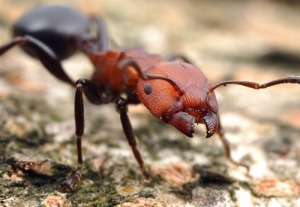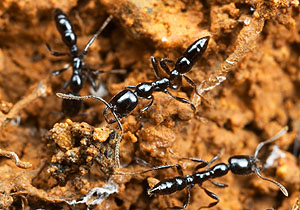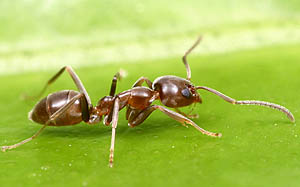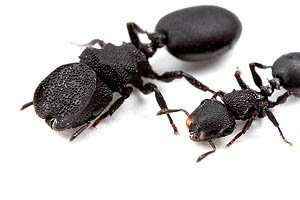What's new in ant science this week? Lots.

Atopomyrmex mocquerysi, South Africa
Myrmecological News has posted a pair of studies online. The first, by Martin Kenne et al, observe the natural history of one of Africa's most conspicuous yet chronically understudied arboreal ants, Atopomyrmex mocquerysi. The second, by Jim Wetterer, is part of a continuing series on the global spread of pest ants. This installment targets Monomorium destructor.

Onychomyrmex sp., Australia
The Australian Journal of Entomology counters with a pair of its own ant studies. In the first, Hiroki Miyata et al report on the predatory behavior and migrations of Onychomyrmex hedleyi, a poorly known amblyoponine ant that has convergently evolved a nomadic army ant lifestyle. Unlike most army ants, Onychomyrmex preferentially attack centipedes.

Linepithema humile, the Argentine Ant
In the second study, Elissa Suhr et al offer the most detailed look yet at the Argentine ant supercolony in Melbourne, Australia. The lack of both genetic diversity and aggression among distant nests echos the behavior of previously studied Argentine ant populations in California and Europe.

Cephalotes rohweri, soldier and worker
In the Journal of Evolutionary Biology, Scott Powell relates how the ecology of nest site limitation may drive the evolution of distinct soldier castes in Cephalotes turtle ants. Incidentally, Scott will be guest blogging for me while I'm in the field next month, so if you're really, really nice to him maybe you'll get to hear all about Cephalotes and the amazing things they do.
In other news, NSF is throwing Kaspari & Davidson some resources to keep up their studies on tropical ant ecology in Panamá, Kari Ryder Wilkie seems to have brought the Ant Room back to life, and the French have assembled an impressive site on their local myrmecofauna.
Plus, this breaking story sounds bad. Do any of you from that part of the world know the identity of the offending species?

Nice news stories, Alex. :)
Very cool about Onychomyrmex. Of course, feeding on centipedes is the norm for amblyoponines, but I suppose as "army ants", they can go after bigger ones!
The offending ant on the Solomons is Anoplolepis gracilipes.
http://www.rnzi.com/pages/news.php?op=read&id=44981 for the ants attacking plants.